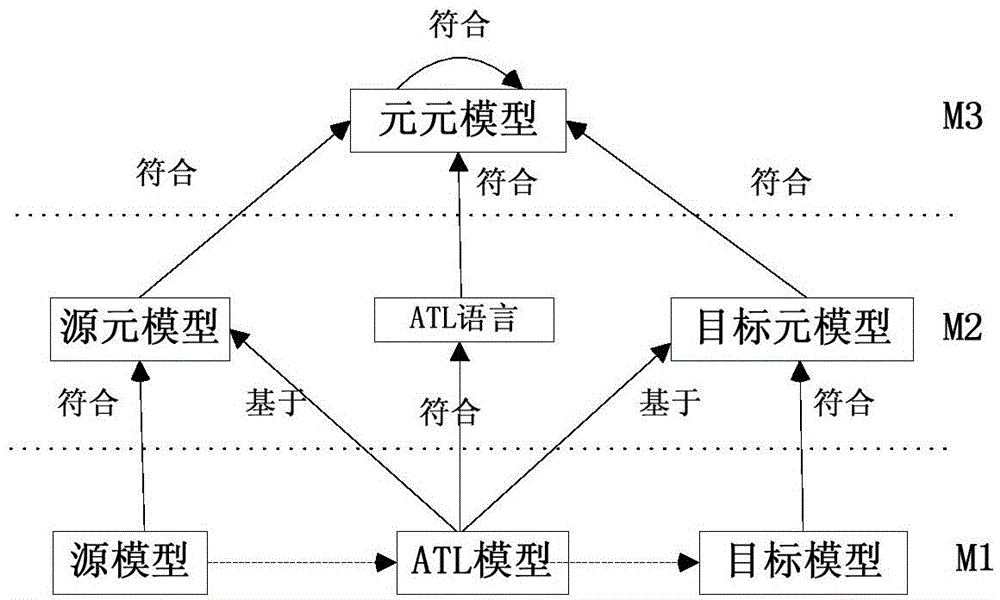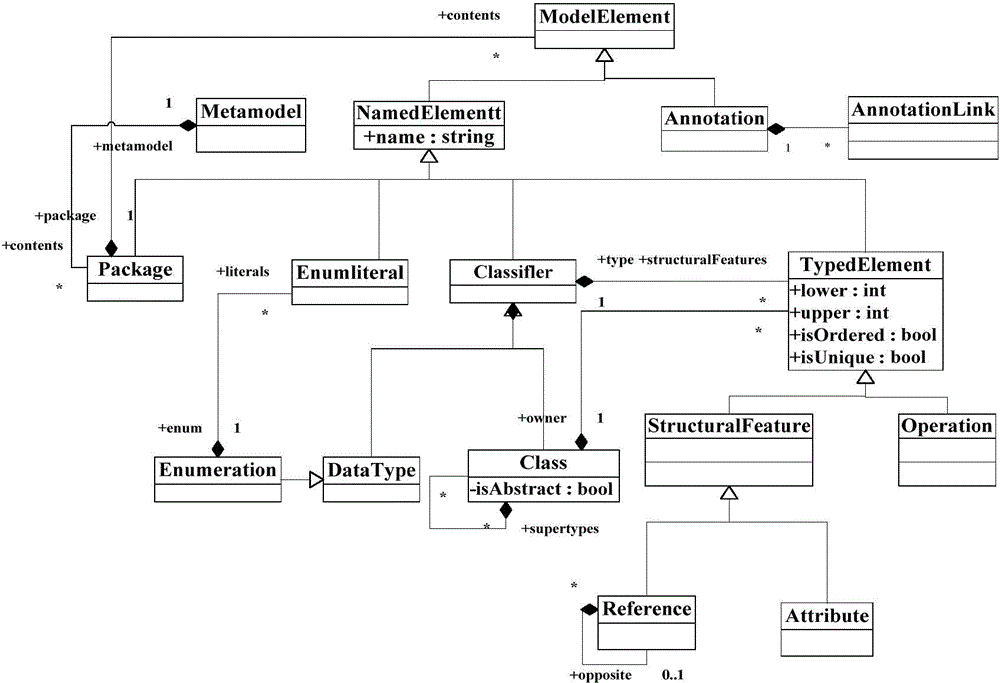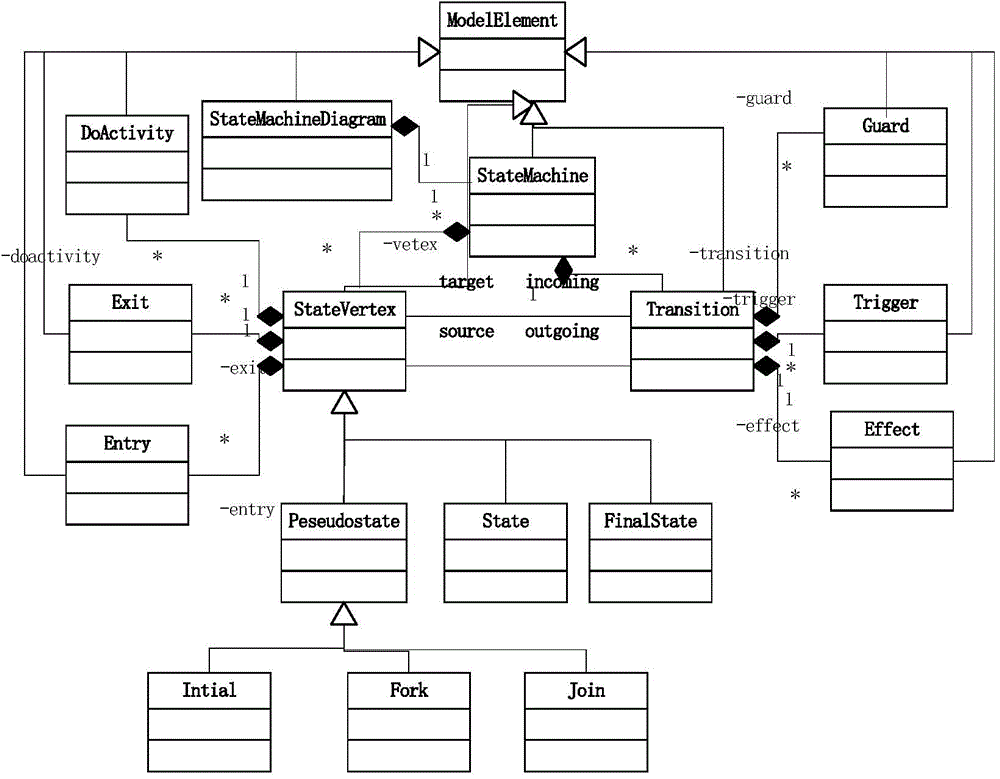Transfer method from demand model to simulation model
A simulation model and model conversion technology, applied in special data processing applications, instruments, electrical digital data processing, etc., can solve problems such as difficulty in verifying demand models, save labor costs, avoid dependencies, and improve development efficiency.
- Summary
- Abstract
- Description
- Claims
- Application Information
AI Technical Summary
Problems solved by technology
Method used
Image
Examples
Embodiment Construction
[0028] Concrete steps of the present invention are as follows:
[0029] 1 Establish a model conversion framework
[0030] Model to framework such as figure 1 As shown, it is divided into three layers. The top M3 layer is the meta-meta-model layer, M2 is the meta-model layer, and M1 is the model layer. According to the relationship among various models in model-driven theory, meta-metamodel can generate meta-metamodel and meta-model, and models can be generated according to meta-model. The meta-meta-model can be defined by itself, and at the same time, it can generate a requirement model meta-model, a simulation model meta-model, and ATL language. The requirement model meta-model generates the requirement model, the simulation model meta-model generates the simulation model, and the ATL language generates the ATL model. For the user, it only needs to input the demand model, and through a series of conversions, it will be automatically converted into a simulation model.
[...
PUM
 Login to View More
Login to View More Abstract
Description
Claims
Application Information
 Login to View More
Login to View More - R&D
- Intellectual Property
- Life Sciences
- Materials
- Tech Scout
- Unparalleled Data Quality
- Higher Quality Content
- 60% Fewer Hallucinations
Browse by: Latest US Patents, China's latest patents, Technical Efficacy Thesaurus, Application Domain, Technology Topic, Popular Technical Reports.
© 2025 PatSnap. All rights reserved.Legal|Privacy policy|Modern Slavery Act Transparency Statement|Sitemap|About US| Contact US: help@patsnap.com



